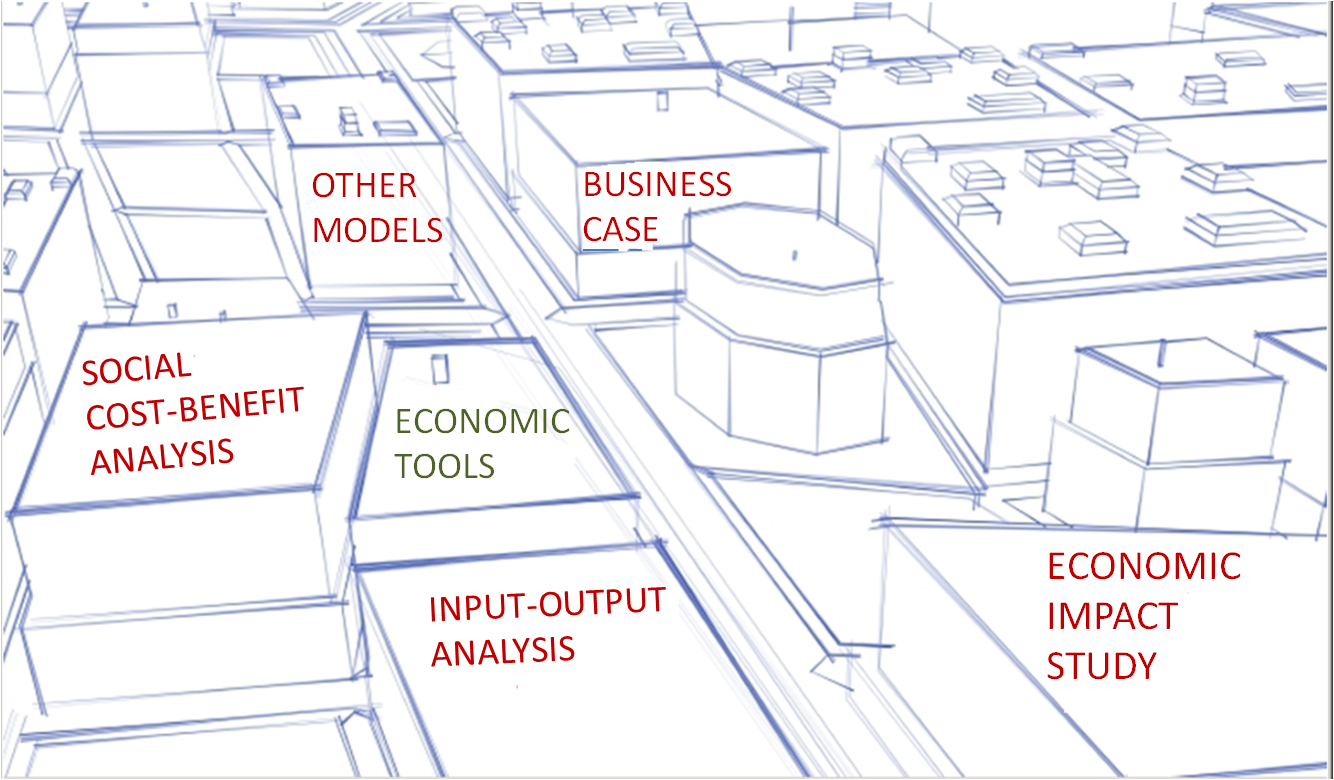Difference between revisions of "Business case"
| Line 2: | Line 2: | ||
= Business case = |
= Business case = |
||
A '''business case''' is one of the most frequently used tools by economists to facilitate the preparation of a robust and feasible urban plan. Business cases capture the reasoning for initiating a project by estimating the revenues and costs for the public authorities (which are partly covered by private parties/investors) and by identifying changes in demands for government utilities and services resulting from the project development. The core of a business case may be incorporated into the planning application's "[[supporting report]]", which contains detailed information about the various aspects (compliance with planning policy and/or master plans, costs and revenues) of the planned urban object. |
A '''business case''' is one of the most frequently used tools by economists to facilitate the preparation of a robust and feasible urban plan. Business cases capture the reasoning for initiating a project by estimating the revenues and costs for the public authorities (which are partly covered by private parties/investors) and by identifying changes in demands for government utilities and services resulting from the project development. The core of a business case may be incorporated into the planning application's "[[supporting report]]", which contains detailed information about the various aspects (compliance with planning policy and/or master plans, costs and revenues) of the planned urban object. |
||
== Relevance == |
|||
Knowlegde about economic models/tools such as business cases can help the urban planner to systematically survey all the relevant (socio-economic) impact caused by an urban development and security threats. This insight will help the responsible urban planners to make the best choices from an socio-economic point of view. |
|||
== Scope of a business case == |
== Scope of a business case == |
||
Revision as of 14:04, 6 December 2012
Contents
Business case
A business case is one of the most frequently used tools by economists to facilitate the preparation of a robust and feasible urban plan. Business cases capture the reasoning for initiating a project by estimating the revenues and costs for the public authorities (which are partly covered by private parties/investors) and by identifying changes in demands for government utilities and services resulting from the project development. The core of a business case may be incorporated into the planning application's "supporting report", which contains detailed information about the various aspects (compliance with planning policy and/or master plans, costs and revenues) of the planned urban object.
Relevance
Knowlegde about economic models/tools such as business cases can help the urban planner to systematically survey all the relevant (socio-economic) impact caused by an urban development and security threats. This insight will help the responsible urban planners to make the best choices from an socio-economic point of view.
Scope of a business case
The scope of a business cases defines which characteristics, impacts, boundaries and stakeholders of an investment are included in the calculations. Public projects such as spatial developments or infrastructure projects include multiple stakeholders such as users, operators and society as a whole. Therefore, a business case with a wide enough scope with regards to external stakeholders (and issues such as safety, the environment, etc.) can be considered identical to (or an integrated part of) a social cost-benefit analysis. In contrast, business cases performed by private investment companies without the inclusion of external stakeholders, are in most cases pure financial cost-benefit analysis comparable to an economic impact study.
Goals of business cases in an urban development domain
An important goal of a business case is to estimate the project-specific investment revenues of the urban development project. These revenues depend on many factors and consists of many different categories. A new highway, for example, leads to a reduction of travel time, travel costs, tax revenues, safety benefits, scale and agglomeration advances due to an increased size of the market, an improved functioning of labour markets in the region, etc.
A spatial development, however, will not only lead to revenues (exploitation benefits etc.), but also to investment costs. These costs depend on many factors and consists of many different categories. In general, the most important cost factors are labour costs and material costs. Other important cost factors are: overhead costs, maintenance costs, legal fees, administrative costs, etc. Security costs can also be included in the business case. Damage to or destruction of an urban object can be prevented with the help of security measures in the urban object design. Costs to prevent future damage or destruction, theft etc. are summarized by the term "economic impacts of security measures".
Project-specific investment costs are not only influenced by the size of the spatial development, but also by the economies/diseconomies of scale and the length of the construction period, and hence, the exposure to economic uncertainties (changing interest rates, inflation, et cetera). Moreover, the investment costs are influenced through the relative cost and supply of labour and materials.
Related subjects
Urban planning processes employ a host of economic tools/models:
- Social cost-benefit analysis
- Input-output analysis
- Economic impact study
- Other economic tools
- Economic tools
See also the clickable map below:
Other related subjects:
Footnotes and references
MAP
<websiteFrame> website=http://securipedia.eu/cool/index.php?wiki=securipedia.eu&concept=Business_case height=1023 width=100% border=0 scroll=auto align=middle </websiteFrame>
<headertabs/>

